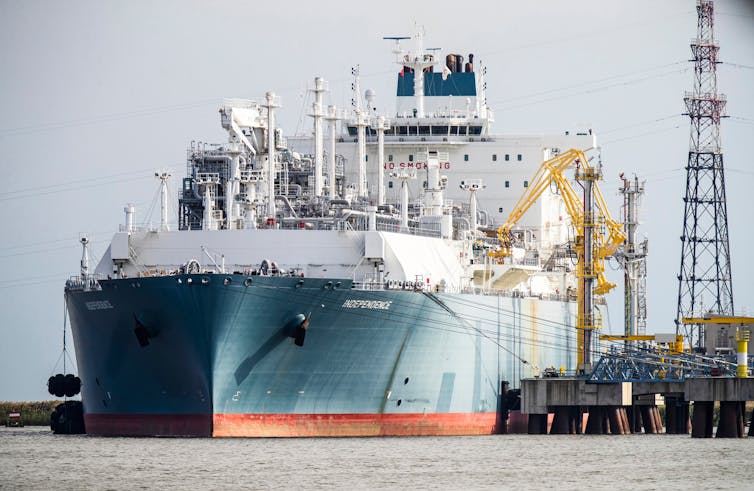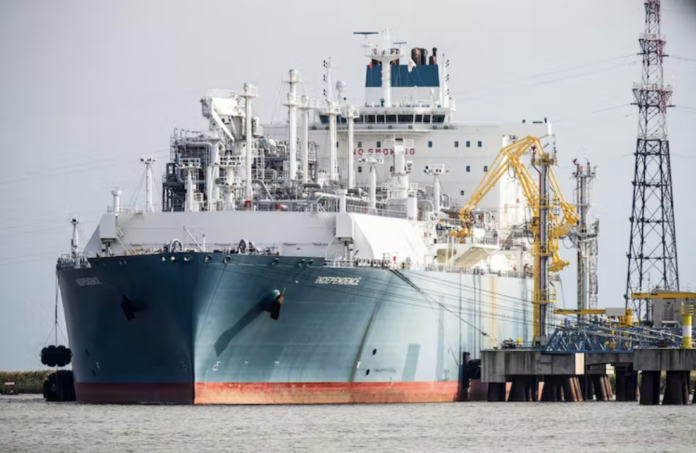Could Lithuania hold the key to Europe’s energy security?

By Anastasiya Shapochkina, Sciences Po
On 19 October, European Commission president Ursula von der Leyen announced that the EU had replaced two-thirds of its Russian gas imports since February by switching to other suppliers. Such a turnaround seemed unattainable last spring, when the invasion of Ukraine turned Moscow from an EU business partner into a military threat.
Despite the EU’s reduction of its energy dependence on Russia, there is work to be done in the long term. To achieve autonomy from Russian energy, the Union could learn from the experience of one of its members, Lithuania – a country which, since declaring its independence from the USSR in 1990, has been able to adapt to a complex geopolitical context to ensure its energy security.
The Lithuanian case has three major lessons.
Lesson 1: Don’t give up nuclear power
Lithuania’s path to energy independence has not been easy.
Before its accession to the EU on 1 May 2004, nuclear power was the mainstay of its energy mix, with Vilnius relying on it for 77% of its electricity. The country nevertheless had to shut down two of the reactors of its Ignalina nuclear power plant as a precondition for joining the Union, due to their based on the same outdated technology as Chernobyl.
Nuclear power was subsequently replaced by Russian natural gas and oil. In 2011, these two sources made up 75% of the national energy mix (the rest coming from coal, oil products, hydro and biomass). The country therefore deeply depended on hydrocarbon imports from Russia.
Faced with the same dilemma of European dependence on Russia following the invasion of Ukraine, Germany decided in October to keep its three remaining nuclear power plants in operation at least until 2023. In Poland and the Netherlands, decisions were taken to build three and two new nuclear power plants respectively. The two countries also boast two nuclear reactors exclusively dedicated to research, Maria (30 MW capacity) and Borssele (482 MW capacity). France, which has historically banked on atomic energy, has also embraced nuclear’s comeback, after president Emmanuel Macron pushed a bill in November relaxing planning regulations for the construction of nuclear reactors. At present, nuclear power generates 25% of Europe’s electricity, and the share of nuclear is expected to decrease to 12-15% by 2050 despite these plans. This is because many old reactors are due to close and most new ones are planned outside Europe.
Lesson 2: Have a strategy
Ending energy dependence on Russia is an explicit goal in Lithuania’s National Energy Independence Strategy (NEIS). When Russia began blocking gas exports to the EU last spring, Vilnius was able to give up Russian gas as it has been preparing for it for years.
In fact, the country had realised the urgency of severing energy ties with Moscow back in 1993, when Russian oil supplies were cut off for non-payment, or so Moscow asserted. The then government began by diversifying its oil suppliers, with momentum picking up in particular in 2006, when Russia deactivated the “Druzhba” (“Friendship”) pipeline branch through Lithuania. In 2021, the state went on to convert its Butinge terminal into an oil import terminal. This has largely enabled Vilnius to diversify oil imports as early as 2006 and to completely stop importing Russian oil by June 2022. Nowadays, Lithuanian oil comes from Saudi Arabia, Kazakhstan, the UK, the US, and Norway.
The second important element of the Lithuanian energy strategy has been the densification of electricity interconnections with Poland over the years (via the electricity transmission network LitPolLink and the future HarmonyLink), and with Scandinavia (via NordBalt, active since 2016). Thus, still in 2019, Russia and Belarus accounted for around half of Lithuania’s electricity imports. Since 2022, the country buys electricity from Sweden (70% of imports) and Latvia (30%).
The third part of this strategy was the reduction of Russian natural gas imports over the last 10 years through the construction of a dedicated LNG terminal. The opening of the Klaipeda port terminal in 2014 has helped to diversify gas suppliers. While in 2011 all natural gas came from Russia, these imports had dropped by 60% by 2019, and fell to zero by May 2022, after the government invested in more floating storage and LNG import capacity, including from the US and Norway, for whom Lithuania is the most important export destination, despite its size.
Lesson 3: Diversify
In addition to supplier diversification, Lithuania has invested in technology diversification.
In practice, the government has reduced the share of natural gas in the country’s energy mix by investing in renewable energy and boosting the share of biomass in district heating.
Such technology choices have helped the country leverage the problems of intermittency of supply linked to wind and solar energy. For example, through the use of biomass, Lithuania has managed to reduce the share of Russian gas in its heating system from 80% in 2010 to zero by 2022.
A voice that is beginning to be heard in Europe and in France
Lithuania is an excellent student of energy security. The country remains an island of stability in Eastern Europe and is positioning itself as an emerging investment pole, despite a complex geo-economic context.
On energy issues, European partners can only learn from the Lithuanian model.
It appears that Lithuania remains a privileged interlocutor of the French government. This was reaffirmed at the beginning of October, when the Lithuanian Prime Minister Ingrida Simonyte met her counterpart Elisabeth Borne at a working meeting at Matignon, where energy security was discussed among other priority issues. The meeting took place on the sidelines of the Franco-Lithuanian business forum, organised in Paris by Medef International, France’s largest employer federation, to promote the Lithuanian economy. Proof that this small country of some 3.5 million people is of interest to politicians and business circles alike.![]()
Anastasiya Shapochkina, Présidente d’Eastern Circles et Maître de conférences en géopolitique, Sciences Po
This article is republished from The Conversation under a Creative Commons license. Read the original article.



